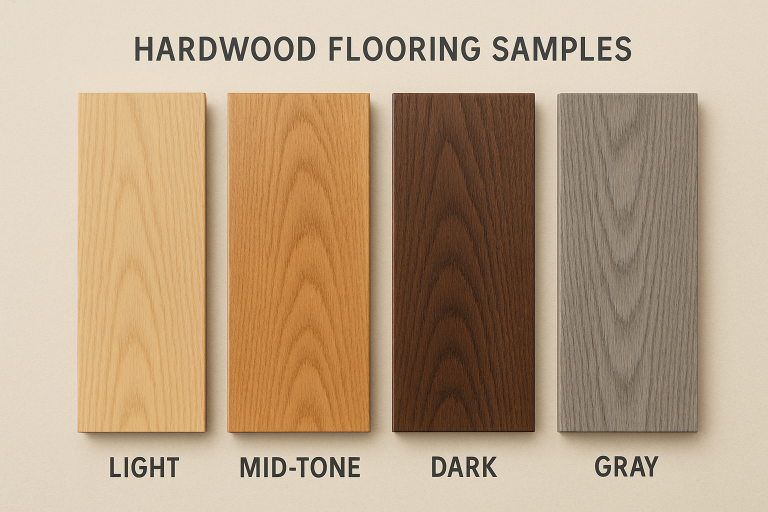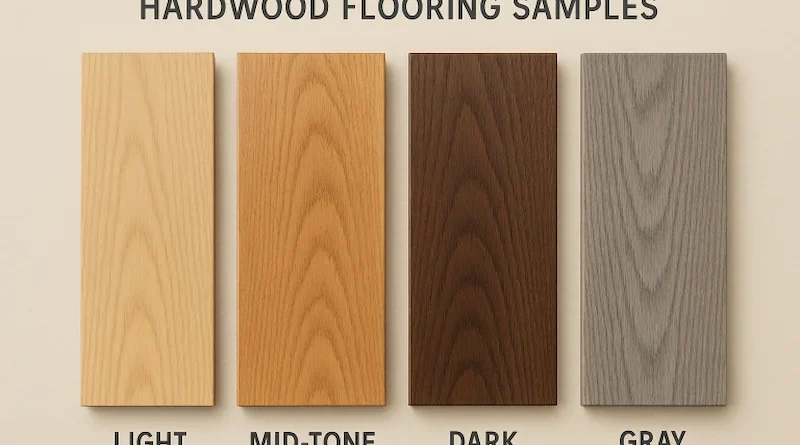Tips for Choosing the Right Hardwood Flooring
Hardwood flooring transforms any space, infusing it with warmth, style, and enduring value. The process of selecting the perfect flooring for your home is more than just picking a color or grain—it involves recognizing your household’s needs, future maintenance requirements, and the unique attributes of various hardwood types. For homeowners in the Denver area, selecting quality options like those available from SOEN Hardwood Denver can ensure exceptional results that meet both design and budget goals.
Understanding the technical and aesthetic aspects of hardwood provides a clear path to a choice that will last for years. Whether you prioritize longevity, specific wood characteristics, or seamless installation for challenging spaces, each factor significantly impacts the outcome and your overall satisfaction with the floor.
Solid vs. Engineered Hardwood
Deciding between solid and engineered hardwood is the foundation for a successful installation. Solid hardwood is milled from a single piece of timber, allowing for repeated sanding and refinishing. Its resilience and longevity make it a classic choice, but it is best reserved for spaces where humidity and temperature are stable. On the other hand, engineered hardwood consists of a real wood surface layer atop a stable core built from plywood or high-density fiberboard. This structure reduces expansion and contraction, making engineered planks a superior choice for moisture-prone areas, such as basements, where traditional hardwoods might warp.
Selecting the Right Wood Species
The species of hardwood you select not only determines the look, ranging from light hues, such as maple, to rich, dark browns with walnut, but it also directly impacts functionality and longevity. Oak remains a perennial favorite due to its strength and distinctive grain pattern, offering resistance to dents and making it ideal for active households. Maple and hickory are also admired for their toughness, while softer woods like cherry and walnut create elegant visual statements in formal or less-trafficked rooms. Discerning the demands of the space will guide your choice of hardwood species.
Plank Width and Length
Plank size can significantly impact the visual effect of your flooring. Wider planks (over five inches) can impart an expansive, airy feeling but may expose more of the wood’s natural idiosyncrasies like knots or color variation. Narrower planks offer a classic, uniform aesthetic and can help smaller rooms feel balanced. Length is also key—longer boards minimize the number of seams for a cleaner flow, while varying lengths supply organic interest and can make installation simpler in irregular layouts.
Finish and Sheen Options
The right finish will protect your hardwood and ensure it integrates with your décor. Matte finishes excel at masking dust and small scratches, which is excellent for households with pets or children. High-gloss sheens dazzle with a mirror-like shine but show blemishes more easily. Satin and semi-gloss finishes offer a middle ground, striking a balance between reflectivity and practicality. Different finishes also affect slip-resistance and should be chosen with your household’s needs in mind.
Installation Methods
Proper installation is as necessary as your choice of wood. Nail-down methods, requiring a wood subfloor, are standard for solid hardwood and result in a permanent, stable floor. Glue-down installation is ideal for engineered hardwood, particularly on concrete surfaces, as it provides sound absorption and stability. Floating floors are popular for DIY projects; planks lock together without attachment to the subfloor, allowing for flexibility in response to seasonal expansion. In each scenario, consulting with an experienced installer guarantees your flooring lasts for decades.

Maintenance and Care
Routine care keeps your hardwood’s sheen and extends its lifespan. Sweep or vacuum frequently to remove abrasive particles, and select pH-neutral cleaners formulated for hardwood surfaces. Households with high activity levels should utilize area rugs in entryways and pads under furniture to prevent scuffs and indentations. Avoid soaking your floor or using harsh chemical products to maintain both the finish and the integrity of the wood.
Budget Considerations
Initial costs for hardwood flooring are only part of the equation. While solid hardwood often costs more due to its material and installation demands, its ability to be refinished multiple times can result in better long-term value. Engineered hardwood is often more affordable and versatile, offering a viable solution for rooms where traditional hardwood installation would be complicated or too expensive. Always consider installation, finishing, and required subfloor preparation in your final calculations, and collect several quotes before making a decision.
Environmental Impact
Eco-conscious consumers should choose floors from responsibly managed forests with FSC or similar certifications, which ensure sustainable logging. Locally sourced materials reduce transportation emissions. Reclaimed wood is an eco-friendly option, repurposing existing materials and lowering demand for new timber. A comprehensive approach to flooring considers beauty, practicality, and sustainability, aligning with household needs and style preferences for a durable, timeless home asset.
Conclusion
Choosing the right hardwood flooring involves balancing style, function, and value. From solid versus engineered options to species, finishes, and installation, each choice affects look and performance. Considering maintenance, budget, and environmental impact makes your decision practical and responsible. With careful planning, hardwood flooring becomes a lasting investment that boosts comfort, sustainability, and home character.
Visit the rest of the site for more interesting and useful articles.

